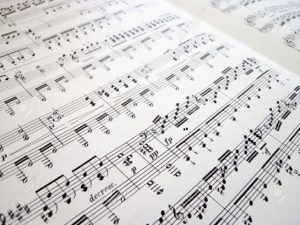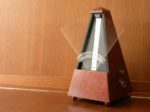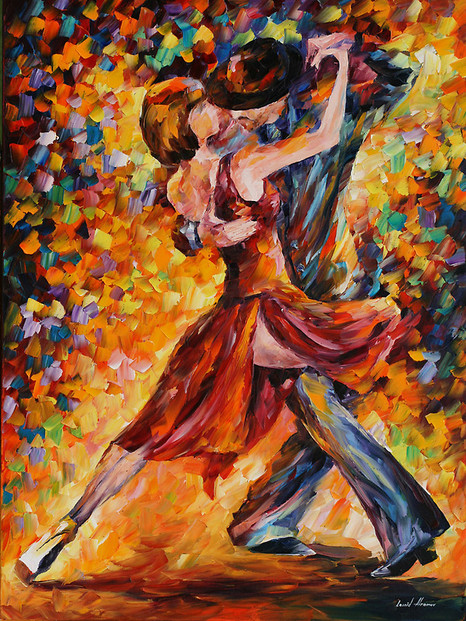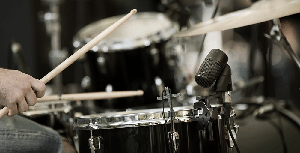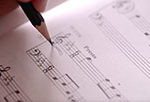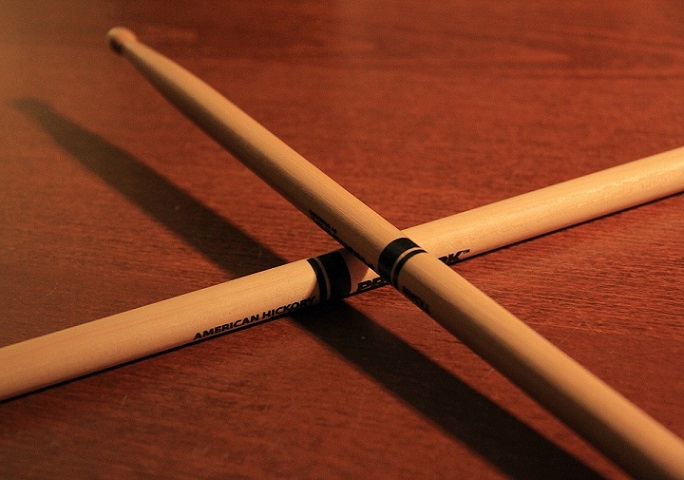
The drumstick market is saturated with choice. Every brand has every stick weight, length, girth, and shape imaginable, which makes it increasingly difficult to make a decision. Which weight should you go for? What is the best length for your style? Which tip shape works best for you? Which brand is best? This article will answer these questions and leave you with a clearer idea of what you want from a pair of drumsticks.
Sizing
If you've spent any time shopping for drumsticks, you've probably seen a bunch of numbers and letters that you don't recognise (e.g. Vic Firth 5AN). Drum kit manufacturers use a universal code for labelling the approximate size and weight of drumsticks, although exact measurements vary between brands
The number refers to the circumference or thickness of the stick. The lower the number, the thicker the stick. For example, a 7A stick is thinner than a 5A stick, which in turn is thinner than a 2B stick. The sticks circumference is the biggest indicator of its durability and the musical application it was designed for. A thinner stick is less durable than a thicker one, and it is also lighter, which makes it more appropriate for quieter styles of music (jazz, acoustic pop). A thicker stick is louder, more durable, and better suited to heavier styles of music (rock, metal, big band).
The letter was traditionally used to signify the stick’s application.
- “S” refers to “street.” These sticks were traditionally used for marching drummers or drum line performers. They're thicker and offer greater volume.
- “B” refers to “band.” These sticks were traditionally lighter than “S” and used for most band applications.
- “A” refers to “orchestra.” These sticks were traditionally even lighter than “B” sticks, and were used for light orchestral or small band playing.
This means then that a 5B stick is slightly thicker than a 5A stick.
Below is a list of some common stick sizes and their pros/cons and suggested applications.
- 8A - extremely light sticks. Great for quiet volumes such as background jazz or orchestral playing.
- 7A - ideal for light acoustic or orchestral playing. Suitable for jazz or light pop music.
- 5A - thicker and heavier than 7A. A good all rounder capable of louder volumes and light playing. Suitable for pop, rock, jazz, etc.
- 5B - slightly thicker than 5A. Good for rock and pop as well as louder volume jazz applications.
- 2A - thick sticks ideal for loud music such as rock or metal.
- 2B - slightly thicker than 2A. Great for heavy metal.
This is just a guide, and there's no reason you can't play metal with a pair of 7A sticks, or jazz with a pair of 2B sticks. In fact I'd urge you to develop enough control to be able to play at all volumes regardless of the stick you're using.
The Tip
The stick’s tip dictates the initial sound as the stick strikes a surface. Here's a guide to what sort of sound you can expect from some common tip shapes.
- Small bead tip produces a light, focused sound. Cymbals sound more controlled and drums sound slightly crisper.
- Acorn tip produces a “fatter” sound than a small bead does. As more wood makes contact, we can hear the stick more clearly.
- Barrel tip produces a big meaty sound. The barrels size produces greater volume so cymbals sound more washy and less controlled.
- Elongated acorn tip produces a very woody stick definition. The large surface area means that even more of the stick is heard.
There is no right or wrong tip shape. The only way to choose the right tip for you is by trying them out both on a practice pad, and on your drums and cymbals.
Besides the different shapes, tips can come in wood or nylon. Wood tips offer a darker less resonant tone while nylon sticks offers a brighter, sharper sound, especially from cymbals.
Brands
A number of global drumstick brands have a good reputation for quality and choice. Such brands include:
- Vic Firth
- Vater
- Promark
- Zildjian
While going with a big brand like these usually guarantees quality, lots of smaller local drumstick manufacturers also offer a similar quality, often for a lower price.
Beaters, Mallets, Brushes, and Rods
In addition to your drumsticks, you might want some specialist beaters, mallets, or brushes. Beaters and mallets are particularly useful for cymbal or tom tom swells, something that you'll be doing lots of if you intend to play theatre productions or music for film. If you want to play jazz or light pop music in small venues or in the studio, you might want to buy some brushes. Rods are also useful if you want a lighter, more woody sound while playing pop or rock music.
You'll find these sticks in any good music shop, and they will all be a valuable addition to your stick bag.
Final Thoughts
It’s impossible to decide which sticks to use if you haven't physically tried them out. Go to a music shop and experiment with different sizes and brands. You might decide that you want a 7A wood tip, but a Vic Firth 7A and a Zildjian 7A are very different, as one has an acorn tip and one has a small head tip. Think about the music you want to play and the sort of drummer you want to be, and allow these factors to influence your decision. This process will take time. It took me about 12 years to finally settle on the sticks I use now, and I'm still varying the sticks I use depending on the musical application.
Ready to pick up the drums?
Start learning with our 30-day free trial! Try our drums courses!About Liberty Park Music
LPM is an online music school. We teach a variety of instruments and styles, including classical and jazz guitar, piano, drums, and music theory. We offer high-quality music lessons designed by accredited teachers from around the world. Our growing database of over 350 lessons come with many features—self-assessments, live chats, quizzes etc. Learn music with LPM, anytime, anywhere!


